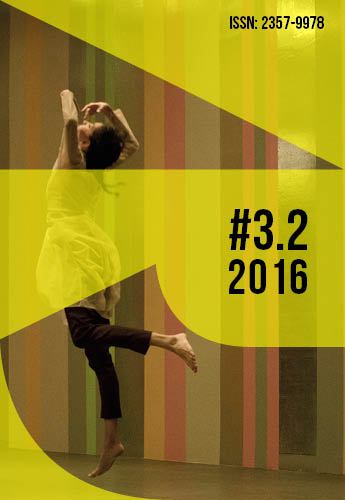Ecrire “la danse” en anthropologie: la violence de la recherche au bout du stylo [Writing "Dance" in Anthropology: Research Violence at the Tip of the Pen]
DOI:
https://doi.org/10.36025/arj.v3i2.10919Keywords:
Dance anthropology, writing, notation, ethnography, Peuls Wodaabe, NigerAbstract
Writing is a central activity in dance anthropology, but it is neither neutral nor innocent. The movement presents challenges in transferring it to paper, and exposes the anthropologist to ethnocentric risks. How can she overcome the categorization mechanisms that have constructed one's knowledge and tend to guide one's gaze? How can he account for practices and use graphical forms that transform the studied content? The act of "writing dance" presupposes an inevitable part of violence in what? To address these different aspects, an angle of reflection will be developed from questions raised during writing about the dances of the Wodaabe, a Fulani subgroup in Niger. The challenge is to associate the problems of writing in dance and in anthropology, and to think about the relationships between the questions posed and the tools used, the movement and the sign, and the researcher and the agents.
Downloads
References
BERNARD, Michel. Esquisse d’une théorie de la perception du spectacle chorégraphique. De la création chorégraphique. Pantin: Centre National de la Danse, 2001, p. 95-100.
BLACKING, John. Movement, Dance, Music, and the Venda Girls’ Initiation Cycle. In: SPENCER, Paul (dir.). Society and the dance. The social anthropology of process and performance. Cambridge/New York: Cambridge University Press, 1985.
BOVIN, Mette. Nomads who cultivate beauty. WoDaaBe dances and visual arts in Niger. Uppsala, Sweden: Nordiska Afrikainstitutet, 2001.
BRANDT, Henry. Nomades du soleil. Lausanne: Guilde du Livre/Clairefontaine, 1956.
CHALLET-HAAS, Jacqueline. Cinétographie Laban [1981]. Crépy-en-Valois: Centre National d’Ecriture du Mouvement, 1986.
CLIFFORD, James. De l’autorité en ethnographie. Le récit anthropologique comme texte littéraire, [1983]. L’ethnographie. N°90-91, t. 79, 1983, p. 87-118.
DOQUET, Anne. Les masques dogon. Ethnologie savante et ethnologie autochtone. Paris: Karthala, 1999.
DUPIRE, Marguerite. Peuls nomades. Etude descriptive des WoDaaBe du Sahel Nigérien, [1962]. Paris: Karthala, 1996.
ESTREICHER, Zygmunt. Chants et rythmes de la danse d’hommes Bororo. Bulletin de la Société Neuchâteloise de géographie, t. 51, fasc. 5, Nº 10, 1954-55, p. 57-93.
EVANS-PRITCHARD, E. Edward. La danse, [1928]. La femme dans les sociétés primitives (et autres essais d’anthropologie sociale). Paris: P.U.F., 1971, p. 154-168.
GEERTZ, Clifford. Ici et là-bas. L’anthropologue comme auteur, [1988]. Paris: Metaillié, 1996.
GINOT, Isabelle. La critique en danse contemporaine: théories et pratiques, pertinences et délires. Habilitation à diriger des recherches dirigée par Jean-Pierre Olive. Université Paris VIII, 2006
GODARD, Hubert. Le geste et sa perception. In: GINOT, Isabelle et MICHEL, Marcelle. La danse au XXe siècle. Paris: Larousse, 2002, p. 235-241.
GONZALES, Philippe. Présentation » du Chapitre 2 « (D)écrire : catégorisation, prise de notes et écriture. CEFAÏ, Daniel (dir.). L’engagement ethnographique. Paris: Édition de l’École des Hautes Études en Sciences Sociales, 2010, p. 109-128.
GOODY, Jack. La raison graphique. La domestication de la pensée sauvage. Paris: Éditions de Minuit, 1979.
HANNA, Judith Lynn. To dance is human. A theory of non verbal communication. Austin: University of Texas Press, 1979.
HUTCHINSON-GUEST, Ann. Dance notation. The process of recording dance on paper. London, Dance Books, 1984.
KAEPPLER, Adrienne. La danse selon une perspective anthropologique, [1978]. Nouvelles de danse, N°34-35, 1998, p. 24-46.
KAEPPLER, Adrienne. Structured movement systems in Tonga. SPENCER, Paul (dir.). Society and the dance. The social anthropology of process and performance. Cambridge/New York, Cambridge University Press, 1985, p. 92-118.
KAEPPLER, Adrienne. Méthode et théorie pour l’analyse structurale de la danse avec une analyse de la danse des îles Tonga, [1972]. GRAU, Andrée et WIERRE-GORE, Georgiana (dir.). Anthropologie de la danse. Genèse et construction d’une discipline. Pantin: Centre National de la Danse, 2005, p. 189-220.
KEALIINOHOMOKU, Joann. Une anthropologue regarde le ballet occidental comme une forme de danse ethnique [1969]. Nouvelles de danse, N°34-35, 1998, p. 47-67.
KILANI, Mondher. L’invention de l’autre. Essai sur le discours anthropologique, [1994]. Lausanne: Payot, 2000.
KURATH P., Gertrude. Panorama de l’ethnologie de la danse [1960]. GRAU, Andrée et WIERRE-GORE, Georgiana (dir.). Anthropologie de la danse. Genèse et construction d’une discipline. Pantin: Centre National de la Danse, 2005, p. 43-76.
LASSIBILLE, Mahalia. Arriver/partir. GLON, Marie et LAUNAY, Isabelle (dir.). Histoires de gestes. Arles: Actes Sud, 2012, p. 147-163.
LASSIBILLE, Mahalia. Quando la memoria dell’etnologo vacilla. Oblio, confronto e riappropriazione di una ricerca. NORDERA, Marina et FRANCO, Suzanne (dir.). RicorDanze: memoria in movimento e coreografie della storia. Torino: UTET, 2010, p. 267-285.
LASSIBILLE, Mahalia. La possession chez les WoDaaBe du Niger: maladie, danse, spectacle. Du choix catégoriel du chercheur. MESTRE, Claire, GÉRY, Marion, GÉBER, Marcelle. Arts soins, les frontières imaginées. Grenoble: La Pensée Sauvage, 2015.
LAUNAY, Isabelle, MENICACCI, Armando. Petites notes sur la notation de la danse. Funambules, N°5, 1997, p. 31-41.
LENCLUD, Gérard. La tradition n’est plus ce qu’elle était. Terrain, 1987, N°9, p. 110-123.
LENCLUD, Gérard. Quand voir, c’est reconnaître. Les récits de voyage et le regard anthropologique. Enquête, N°1, 1995, p. 113-129.
LOMAX, Alan. Folk song style and culture. A staff report on cantometrics. Washington: American Association For the Advancement of Science, N° 88, 1968.
LONCKE, Sandrine. Geerewol. Musique, danse et lien social chez les Peuls nomades wodaabe du Niger. Nanterre: Société d’Ethnologie, 2015.
OLIVIER DE SARDAN, Jean-Pierre. Possession, affliction et folie: les ruses de la thérapisation. L’homme, tome 34, N°131, 1994, p. 7-27.
ROYCE PETERSON, Anya. The anthropology of dance, [1977]. Bloomington/London: Indiana University Press, 1980.
SACHS, Curt. Histoire de la danse. Paris: Gallimard, 1938.
SEYDOU, Christiane. Dictionnaire pluridialectal des racines verbales du peul. Paris: Karthala, 1998.
SAID, Edward. L’orientalisme. L’Orient créé par l’Occident, [1978]. Paris: Seuil, 2005.
VAN ZILE, Judy. Noter la danse: comment et pourquoi ?, [1999]. GRAU, Andrée et WIERRE-GORE, Georgiana (dir.). Anthropologie de la danse. Genèse et construction d’une discipline. Pantin: Centre National de la Danse, 2005, p. 221-234.
Downloads
Published
How to Cite
Issue
Section
License
Copyright (c) 2016 Mahalia Lassibille

This work is licensed under a Creative Commons Attribution-NonCommercial-ShareAlike 4.0 International License.

This work is licensed under a Attribution-NonCommercial-ShareAlike 4.0 International (CC BY-NC-SA 4.0) License.
Authors retain copyright, while licensing their work under a Attribution-NonCommercial-ShareAlike 4.0 International (CC BY-NC-SA 4.0) License.


 English
English Português (Brasil)
Português (Brasil)
